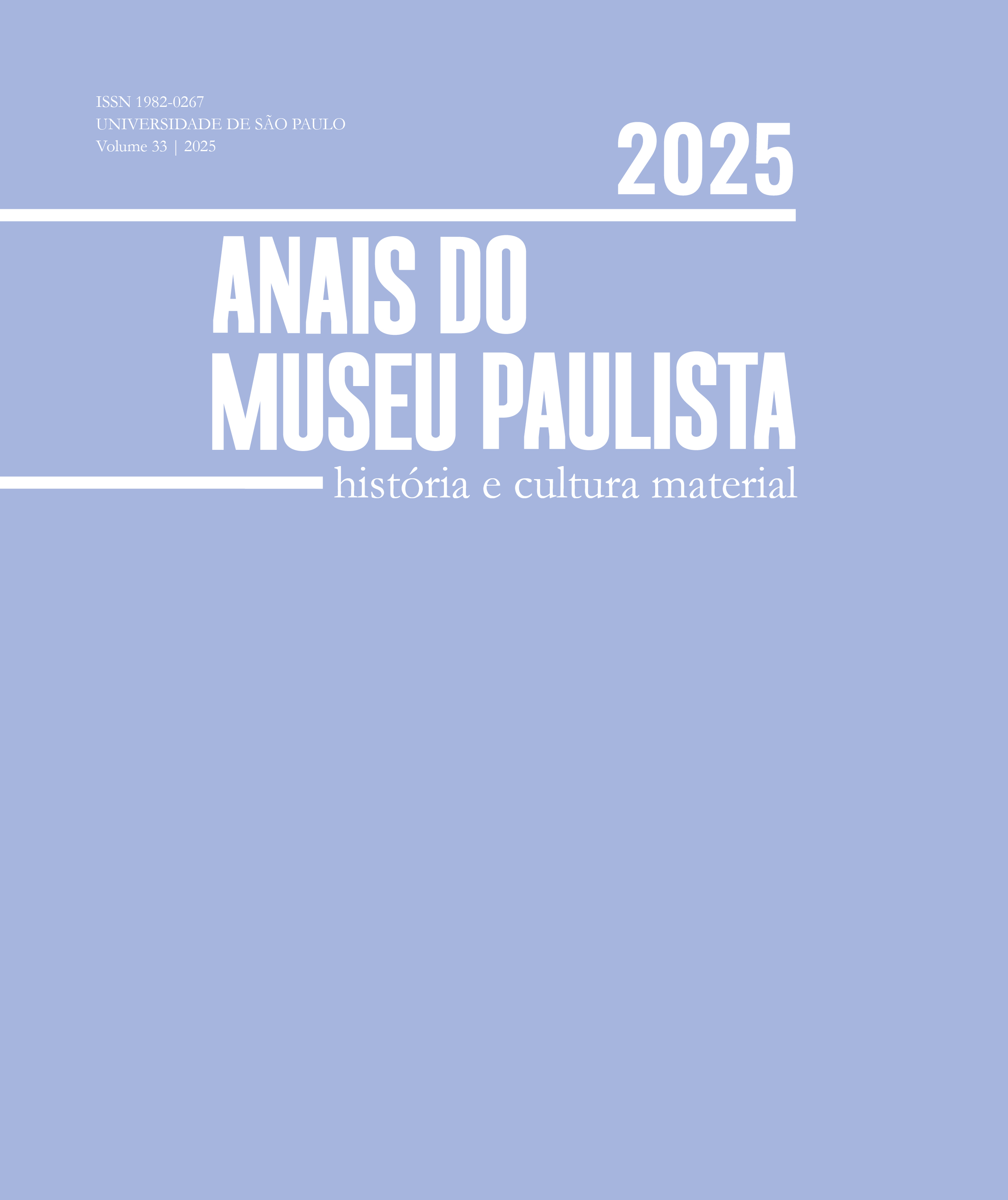Operational landscapes as culture generators: the case of Barros de Beja
DOI:
https://doi.org/10.11606/1982-02672025v33e1Palavras-chave:
Archaelogy, Urbanism, Regional planningResumo
Historically, the countryside has been seen as having a subordinate role to the development of cities. Its place in the understanding of the processes that shape the spatial and social organization of society has often been neglected. But if the countryside is thought of not only as a support to the city, but as a territory with autonomous characteristics, it acquires a radical potential for the transformation of urban development. Starting from this question the research aims to explore the confrontation between ancient and contemporary organization of the hinterlands territory, and examines it as an opportunity to establish alternative development processes. This investigation finds its specificity in the low fields of Alentejo, a region in the south of Portugal that can be understood as a mutating territory, where a wide range of traces of its historical landscape are dispersed within a highly operationalized agro landscape. The proposed research advocates for the view of the countryside as a cultural generator, and sees this characteristic as having the potential to mediate between infrastructural transformations and human settlements.
Downloads
Referências
ANSCHUETZ, Kurt F.; WILSHUSEN, Richard H.; SCHEICK, Cherie L. An archaeology of landscapes: perspectives and directions. Journal of Archaeological Research, v. 9, n. 2, pp. 157-211, June 2001.
AURELI, Pier V.; MARTINO Tattara. 11 Projects. London: AA Publications, 2013.
AURELI, Pier V.; MARTINO Tattara. Platforms: architecture and the use of ground, 2019. Available at: www.mendeley.com/guides/apa-citation-guide/. Last seen: 2023.
BALAKRISHNAN, Sai. Recombinant urbanization: agrarian–urban landed property and uneven development in India. International Journal of Urban and Regional Research, 2019.
BRENNER, Neil. Thesis on urbanization. In: Implosions/explosions: towards a study of planetary urbanization. [S. l.]: Jovis Verlag, 2014.
BRENNER, Neil. Urban theory without an outside. In: Implosions/explosions: towards a study of planetary urbanization. [S. l.]: Jovis Verlag, 2014.
BRENNER, Neil; KATSIKIS, Nikos. Operational landscape. In: The landscapists: redefining landscape relations. [S. l.: s. n.], 2018.
BRENNER, Neil; SCHMID, Christian. Planetary urbanization: urban constellations. [S. l.]: Matthew Gandy, 2011.
BROWN, Steve. Landscaping heritage: toward an operational cultural landscape approach for protected areas in New South Wales. Australasian Historical Archaeology, 2007.
CAPUANO, Alessandra; CARPENZANO, Orazio; TOPETTI, Fabrizio. Il Parco e la città: il território storico dell`Apia nel futuro di Roma. [S. l.]: Sapienza Università di Roma, 2013.
CHOQUER, Gilles. L`analyse de morphologie urbaine: l`exemple de Beja. Archeographic Collection of Coimbra University, v. 2, 2012.
DOMINGUEZ, Álvaro. A paisagem revisitada. Revista Finisterra, Lisboa, v. XXXVI, n. 72., 2001.
DOMINGUEZ, Álvaro. Vida no campo. Porto: Dafne, 2011.
FAIRCLOUGH, Graham L. A new landscape for cultural heritage management: characterisation as a management tool. In: LOZNY, L. R. (ed.) Landscapes under pressure: theory and practice of cultural heritage research and preservation. USA: Springer Science+Business Media, 2006.
FEIO, Mariano. A evolução da agricultura do alentejo meridional: as cartas agrícolas de G. Pery, as difíceis perspectivas actuais na comunidade europeia. [S. l.]: Edições Colibri, 1998.
GHOSH, Swarnabh. Notes on rurality or the theoretical usefulness of the not-urban. Avery Review, n. 27, 2017.
KOOLHAAS, Rem. Koolhaas in the country. Icon’s, Sept. 2014.
LAVIGNE, Cedric. Espaço das sociedades antigas: dinâmica das paisagens da região de Pax Iulia (Beja). [S. l.]: Universidade de Coimbra, 2006.
LEFEBVRE, Henri. The urban revolution. [S. l.]: Minnesota Press, 1970.
LOPES, Conceição. A cidade romana de Beja: percursos e debates acerca da “civitas” de PAX IVLIA. [S. l.]: Universidade de Coimbra, 2003.
LOPES, Conceição. O busto de Julio César de Pax Iulia: percursos e debates em torno da fundação de Pax Iulia. Arquelogia Medieval, n. 14, 2018.
LOPES, Conceição. Pax Iulia. In: BESARRATE, Trinidad Nogales (ed.). Cities of Roman Hispania. [S. l.]: L'erma di Bretschneider, 2021.
MANTAS, Vasco G. A rede romana viária em Portugal: estado da questão e perspectivas futuras. [S. l.]: Coimbra University, 2009.
MARTIN, Daryl. The ThinkBelt: the university that never was. Discover Society, 2014. Available at: www.archive.discoversociety.org/2014/07/01/the-thinkbelt-the-university-that-never-was/. Last seen: 2023.
ONU HABITAT. Lineamientos de diseño y planificación urbana. 2021.
RIBEIRO, Orlando. Portugal, o mediterrâneo e o atlântico. [S. l.]: Coimbra , 1945.
TAVARES, Paulo. In the forest ruins. In: COLOMINA, Beatriz; HIRSCH, Nikolaus; VIDOKLE, Anton; WIGLEY, Mark (org.). Superhumanity: design of the self. Minneapolis: The University of Minnesota Press, 2017. v. 1, pp. 20-35.
Downloads
Publicado
Edição
Seção
Licença
Copyright (c) 2025 Miguel Angel Palacios Carrasco

Este trabalho está licenciado sob uma licença Creative Commons Attribution 4.0 International License.
Autores que publicam nesta revista concordam com os seguintes termos:
- Autores mantém os direitos autorais e concedem à revista o direito de primeira publicação, com o trabalho simultaneamente licenciado sob a Licença Creative Commons Attribution que permite o compartilhamento do trabalho com reconhecimento da autoria e publicação inicial nesta revista.
- Autores têm autorização para assumir contratos adicionais separadamente, para distribuição não-exclusiva da versão do trabalho publicada nesta revista (ex.: publicar em repositório institucional ou como capítulo de livro), com reconhecimento de autoria e publicação inicial nesta revista.
- Autores têm permissão e são estimulados a publicar e distribuir seu trabalho online (ex.: em repositórios institucionais ou na sua página pessoal) a qualquer ponto antes ou durante o processo editorial, já que isso pode gerar alterações produtivas, bem como aumentar o impacto e a citação do trabalho publicado (Veja O Efeito do Acesso Livre).



